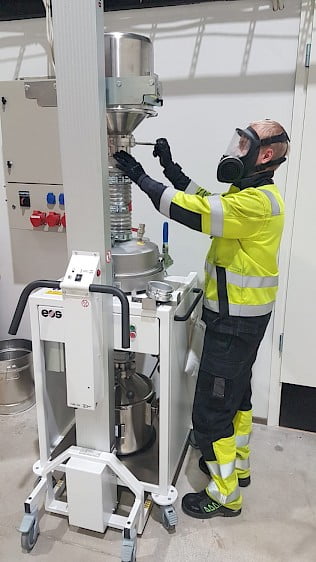Corporate responsibility and sustainable development receive a lot of attention. The genuine pursuit of sustainability calls for the ability to change our traditional thinking, learn, and continuously improve our actions. 3D printing as technology takes us significant steps further. We should see solving the challenges of sustainable development as an opportunity for a profitable business.
Additional manufacturing, familiarly 3D printing, supports these efforts in many ways. In the following, we open up the possibilities from the metal printing point of view.
Sustainability and business success go hand in hand
Optimally designed structures and carefully selected materials reduce the use of materials and improve durability. Replacing multi-part assemblies with individual printed components brings a technical lead, helps protect product rights, brings savings throughout the manufacturing process, and improves recyclability.
The lightweight and reduced space required for printed components help to build entire machines and equipment in lighter and smaller size. The savings in materials, weight, and costs are then multiple and also profits your customer.
Optimized printed metal components are high-performance in use. The benefits come from many different factors. In addition to weight and space savings, printed parts, e.g., improve efficiency by enhancing gas mixing in combustion processes. Unprecedented channel structures significantly reduce process time through enhanced cooling. Streamlined channels in hydraulic components increase energy efficiency and reduce leakage risks.
Printed spare parts, replacement of parts, and repair by printing extend the life of the equipment and make reuse possible. Combining scanning, modeling, and additive manufacturing opens up new possibilities for maintenance.
Could the new structures make possible by additive manufacturing help finding innovative solutions for your company’s business, which will not only reduce the burden but also improve the state of the environment – that is, the path to real sustainability?
Printing is sustainable
Digital manufacturing is a significant national endeavor in Finland. We increase efficiency, automate, seek environmental friendliness, and competitiveness in production. Printing is an essential part of the whole of sustainable manufacturing.
Powder bed technology based on melting metal powder uses precision-targeted lasers for melting, and the energy consumption of printing is reasonable. Recycling of materials is an integral part of the manufacturing process: unmelted powder is filtered locally and reused. However, energy consumption in the manufacture of printing powders and the large-scale utilization of recycled metals in the production of powders still have research and development potential.
The prints are very accurate in dimensions. Additive manufacturing thus creates nearly complete structures. Minimal finishing machining reduces material consumption, printing time, and machine time required for finishing. Reducing work steps saves time and money. The need for logistics decreases as the manufacturing steps are less and the production is closer to the use of the part. All this lowers costs, environmental impact, and the piece is quickly ready for use. We can also see local manufacturing as increasing the security of supply and transparency in the manufacturing chain.
In hybrid printing, complex structures are built on top of a machined base. The cost advantage is most often undisputed. This combination is an excellent example of the idea that printing and traditional manufacturing methods are not competitors, but complement each other.

Recycling is part of the 3D printing process.
Sustainable success by printing
We know 3D printing as a manufacturing technology for several decades. Through the general development of technology, the opportunities to take advantage of 3D printing have multiplied. This improvement is likely to increase the attractiveness of the mechanical engineering industry as a career option. Development and new opportunities increase motivation; the chance to change the world for the better gives meaning.
All the means mentioned above improve sustainability and efficiency and help to increase the competitiveness of the Finnish industry. Competitiveness not only preserves but even increases work in the country. Utilizing innovative 3D printing helps create new options to solve substantial global challenges and create new thriving businesses.
Contact us to discuss more!

